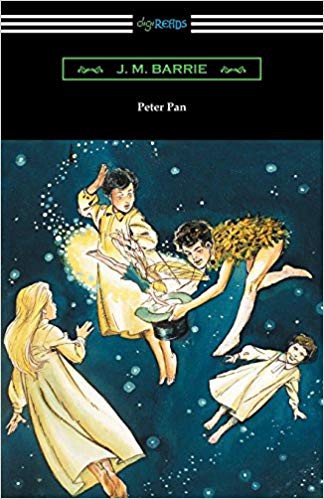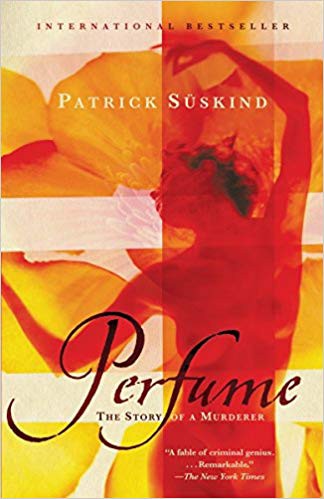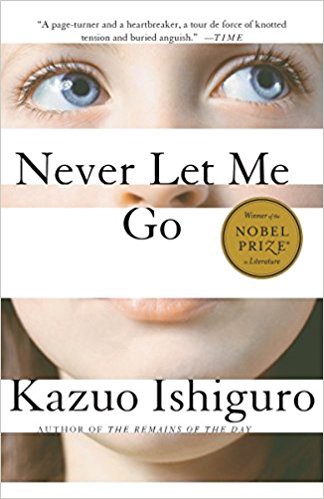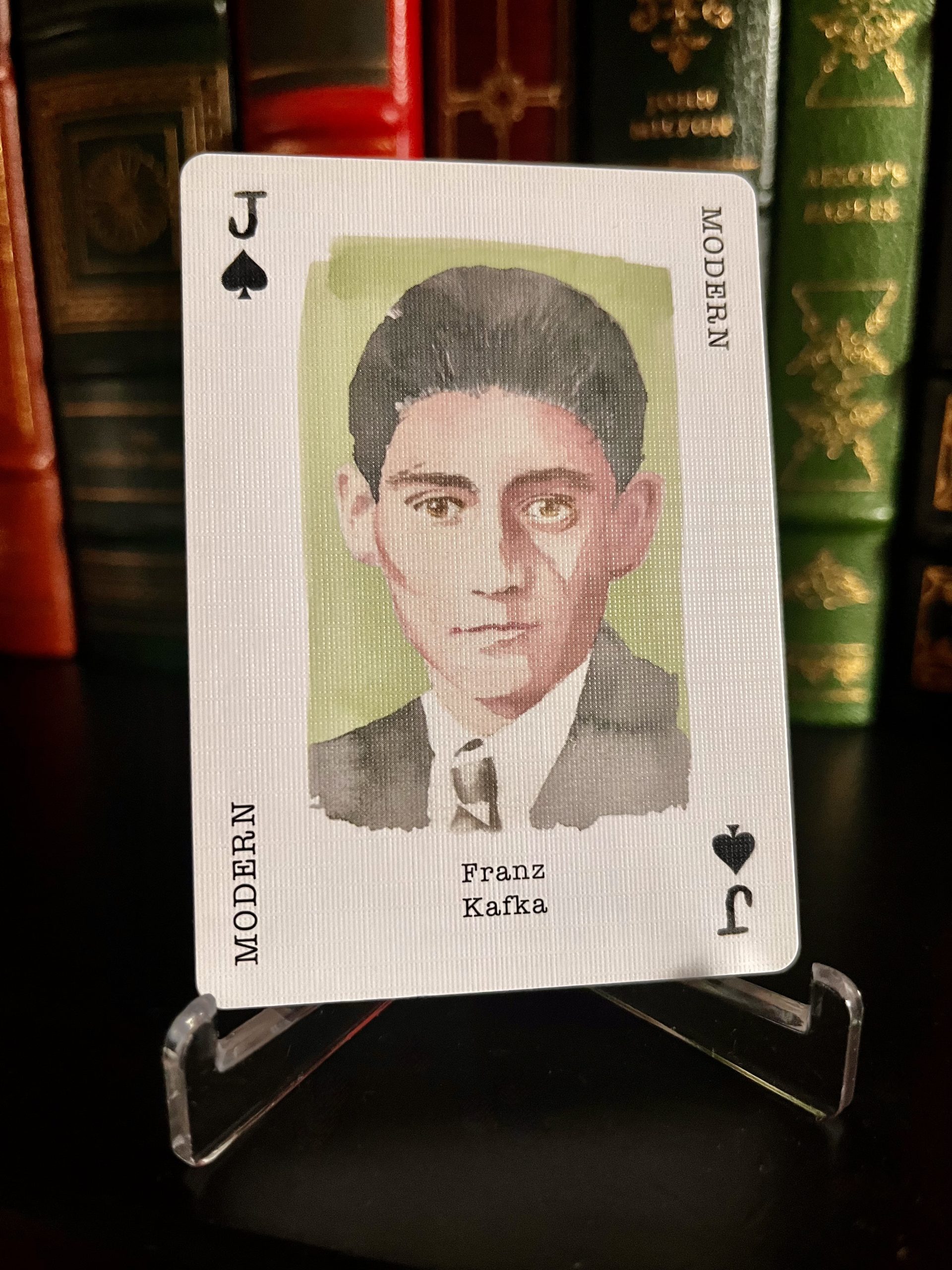Reading Lists
7 Books About Fakes That Are Better Than the Real Thing
Fake countries, fake smells, fake food, and fake relationships that sometimes leave reality in the dust

M y cousin’s house was a sort-of-two-bedroom apartment — one master bedroom and a strange room with sliding doors and no window that, regardless of how it had been marketed, did indeed have a bed, one that I was crashing on. Next to the bed was a nightstand. On the nightstand was a flower in a vase.
I didn’t know if the flower was real. I touched it. I still didn’t know. The vase was filled with glass stones, and somehow I still couldn’t make myself believe it wasn’t an actual flower. It was such a good imitation. It fooled me completely — or maybe it was a real flower, a flower that had evolved beyond its water-requiring state. Maybe I was in the presence of greatness, but my limited intelligence demanded that I dub it a fake, a good fake, but certainly not a real flower—not real to me, one endowed with the ability to know the nature of reality.

Of course the flower wasn’t real. The essence of its makeup was objectively calculable, as is much of observable reality, but it is easy to be tricked, intentionally or otherwise, by the people, places, and things that surround us — and most especially by the thing we think we know best: ourselves.
My upcoming book, Fake, deals with that uncanny experience of being unsure whether something is real or not—and how come, when it isn’t, we assume it’s worse. What if the fake is better than the real? Here are seven books in which imitations, simulations, knockoffs, clones, and scams try to substitute for the real thing—and often succeed.

The Baker’s Secret by Stephen P. Kiernan
What’s the difference between ersatz food and tainted or adulterated food? Typically, it’s a matter of information awareness, but in war knowledge can be a dangerous thing. In Kiernan’s book, the protagonist Emma, a baker in occupied France in 1944, pulls a bit of a Robin Hood, taking part of the extra ration of flour she’s supposed to use to bake bread for the Nazis and mixing it with ground straw to feed her starving neighbors.
In times of ration and embargo, to survive, and more than survive but thrive, requires creativity and suspension of disbelief. Until meat, flour, sugar, and olive oil were in short supply, peanuts, potato bread, sorghum, and sunflower seed oil were not common items in the Western diet. Though straw bread is not something we eat today, the duress of deprivation and the acts of culinary desperation it inspires can have long-lasting effects, not just on individuals’ lives, but on culture for generations to come.


England, England by Julian Barnes
It’s like Epcot but for a single country. England, England, in which a theme park version of England thrives and eventually replaces the original, is the ultimate realization of the fear (mostly held by architects and philosophers, I think) that we are replacing “real” places with cheap copies.
Interestingly, Epcot itself is 36 years old, and all the countries represented in the World Showcase are still going strong—as are Greece, Paris, Venice, and New York, specifically, despite being imitated by Las Vegas resorts.

Peter Pan by J.M. Barrie
Perhaps the most famous prosthetic in Western literature is Captain Hook’s hook. I have a theory about Hook’s relationship with Mr. Smee, his bo’sun, or boatswain: I’m betting when the crocodile severed the Captain’s hand, it was up to Smee to perform the emergency amputation surgery, save the rest of Hook’s arm, and attach the prosthesis. And as this was a pre-20th century medical procedure performed by someone without training, I would imagine Hook is in pretty constant pain. So he blames Smee. He owes Smee, and he needs Smee, but he also hates him because he associates him with the physical and emotional damage inflicted on him in this incident. Hunting down the crocodile and Pan to exact vengeance may be his explicit conscious goal, but on a day-to-day basis he assuages his rage and pain by mistreating the man who did not provide him a fake hand that did what it was supposed to.

Perfume: The Story of a Murderer by Patrick Suskind
In a way Perfume is also about prosthesis, but rather than an artificial limb, the main character Jean-Baptiste Grenouille creates for himself an artificial scent to substitute for the one he should, but doesn’t, produce naturally. Fiction often portrays people with disabilities as either heroes or villains, rather than the complex imperfect people they are. (How Dr. Arizona Roberts’ leg loss is portrayed in the TV series Grey’s Anatomy was a rich exception to the norm.) Grenouille is certainly a villain, but his disability—the lack of a smell, and the need for an artificial “prosthetic” smell—is unique in literature and life.

To All the Boys I’ve Loved Before by Jenny Han
The fake relationship trope is one that pops up regularly in romance novels and made-for-TV movies alike. Often the fake relationship comes about in order for one or both parties to avoid embarrassment at a social function, to be able to face an ex, to win a bet, to sustain a lie, etc., and from this fake relationship true love typically blossoms. To All the Boys is a prime example of this much-loved genre, in which the protagonist, Lara Jean, writes letters to her crushes that were never meant to be seen. Fake-dating a guy, as she does when the letters come to light, seems like the natural progression on the way from unsent letters to really letting someone in, and there’s a built-in conflict for the third act — the people you were trying to fool finding out. Often someone gets hurt, which seems necessary for the real relationship to begin, a cleansing so the two people who became close while pretending can start anew, totally honest with themselves, each other, and the world around them.
Fake relationships take out a lot of the stress and anxiety that comes from actual dating, so it’s no wonder that the thought of them is so appealing to teenagers, as well as to anyone who’s ever had their heart broken, but they are only appealing in fiction if they give us what we really want in the end — true love. No one wants to read a book where the fake relationship ends, and the protagonist walks out the door alone, as loveless as when the story began.

Coraline by Neil Gaiman
The worst thing I ever said to my mother I said to her when I was all of five years old and stuck in bed with the chicken pox. So itchy I wanted to bite my bed posts, I was forbidden from scratching by my seemingly unsympathetic, annoyingly unpoxed mother. I screamed at her from a place of pain and told her I wished my nice kindergarten teacher, Mrs. Zolkiewicz, was my mother instead. All I knew about her was that she was nice to me in class and probably she would have made me feel better with some medicine my stupid, mean mom didn’t know about.
In Neil Gaiman’s children’s novella Coraline, our eponymous heroine gets what every kid wants at some point: idealized versions of her parents. But the Other Mother and Other Father, who pay more attention to Coraline, are more fun, and give her the things she asks for, are impersonators whose love for Coraline is no deeper than the physical similarities they bear to Coraline’s actual parents. For Coraline, the fake is only better than the real for a little while, and then she has to figure out how to deal with the choice she’s made.

Never Let Me Go by Kazuo Ishiguro
Imagine being a chicken on a farm, not knowing what you’ve really been raised for, until the day you wander behind the coop and see a friend of yours being strangled to death by the same man who feeds you every day.
This isn’t an exact metaphor for what happens in Never Let Me Go, the story of a love triangle at a boarding school that isn’t a boarding school, but it is about an individual’s sense of identity and purpose having nothing necessarily to do with society’s sense of the individual’s identity and purpose. Which wins out is a matter of war.
What’s great about this book — spoiler alert — is that the clones are not the villains, but the tragic lovelorn victims. Real people with real lives, they are so much more than the organ farms they were designed to be, and we feel for them in much the same way we do for, say, refugees, prisoners of war, or any other character trapped by circumstances beyond their control. Quite the opposite of Coraline, where impersonation is a matter of choice and the perpetrator is the one committing the crime, Never Let Me Go is a worthy reminder both that monsters are rarely born, but created by their environment, and that no human being can ever really be a fake.
Kazuo Ishiguro’s ‘Never Let Me Go’ Is a Masterpiece of Racial Metaphor
To be fake is not to be real, and the failure of reality is, to our species, fatal. Many of these books exploit this idea that, if our perceptions aren’t correct, if objects aren’t what they claim to be, if we can’t be sure of our external reality, then we can’t be sure of our internal reality and are doomed because nothing really matters. But they also acknowledge that often the fake that’s out to get us can be the fake that’s here to save us.








